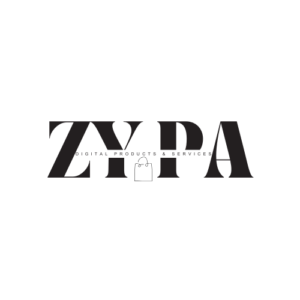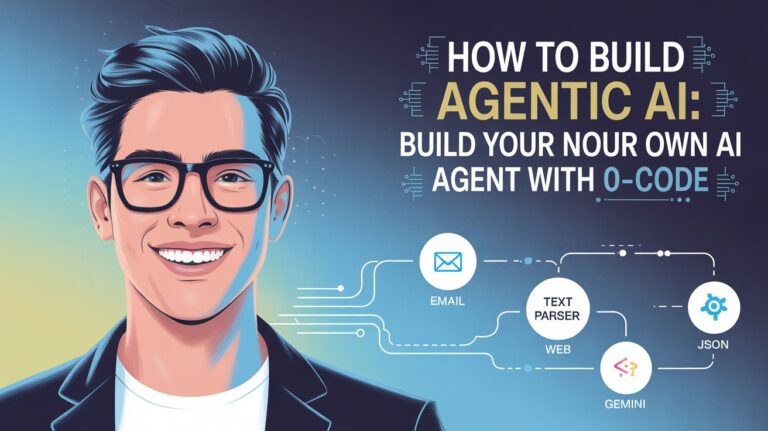What is a Social Media Marketing Strategy?
In this guide, we break down the exact social media marketing strategies used by big brands like Zomato, Starbucks, and Nike to dominate their platforms, engage millions, and drive serious ROI. Whether you’re a content creator, startup, or student building your brand, this post gives you real-world frameworks, proven step-by-step methods and AI tools to help you build your own high-performing social media marketing strategy in 2025.
A social media marketing strategy is a thorough plan that details how an organization will use social media platforms to achieve certain business objectives and marketing goals.
Here are some of the benefits of having a well-thought-out social media marketing strategy:
- Brand Awareness → Getting more people to know about your brand and reach new markets
- Engagement → Interacting with your audience in a way that makes them feel like they matter
- Lead Generation → Converting social media followers into potential consumers
- Customer Loyalty → Fostering continuous relationships that encourage repeat business
In 2025, it’s not simply a good idea to have a clear social media marketing plan; it’s a must.
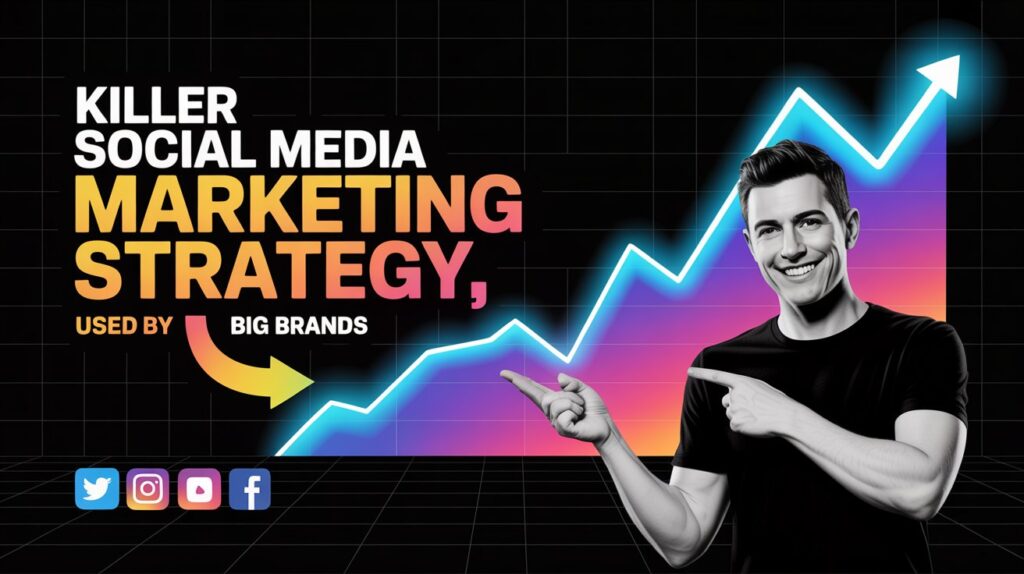
There are more than 4.9 billion people who use social media throughout the world. Companies that don’t have a plan for these platforms could lag behind competitors who utilize them well to interact with customers, get traffic, and make money. Let’s look at some interesting social media marketing case studies that show how they were able to succeed.
Social Media Marketing Case Studies → Social Media Marketing Strategies of Big Brands
The most successful brands approach social media with clear objectives, creative execution, and consistent assessment. Let’s look at how three big brands have come up with plans that work really well.
How Starbucks, Zomato, and Nike Nailed Their Social Media Marketing Strategy for Campaigns
Starbucks → In 2025, Starbucks has refocused its social media approach on quality coffee rather than discount-driven offers. The organization excels at creating a consistent brand voice across all channels while fostering user-generated content. Their strategy emphasizes visual storytelling and interactive material like surveys and contests to enhance engagement. Starbucks’ Instagram account promotes visually appealing product pictures, while their Twitter feed maintains real-time conversations with customers.
Sentiment research indicated that 68% of tweets regarding the Starbucks Rewards program were favorable in 2025, confirming its success. The company also employs social listening to discover client preferences and concerns, allowing them to alter their services accordingly.
Zomato → The food delivery network has perfected the art of humor-based content marketing. Zomato’s social media approach focuses on providing accessible, interesting content that resonates with food lovers. Their Instagram engagement rate of 4.30% exceeds industry averages due to their innovative approach to content.
Zomato develops interactive initiatives like #ZomatoLoot that create attention and encourage user participation. They thrive at leveraging user-generated material, such as customer reviews and food images, to illustrate the variety of eating experiences offered through their platform. Their easygoing, conversational tone makes followers feel like they’re dealing with a buddy rather than a corporation.
Nike → Nike’s social media marketing strategy relies around emotive storytelling and brand activism. Rather than focusing exclusively on merchandise, Nike uses its platforms to convey inspirational stories from athletes at all levels. Their “Just Do It” campaign constantly engages with audiences through powerful storylines.
In 2025, Nike invested over $1 billion to boost design, product production, and sports marketing. The company’s social media channels operate as sites for athletic inspiration, delivering fitness suggestions, encouraging articles, and live engagement with Nike athletes. They efficiently deploy a multilayer influencer marketing funnel that works from macro to micro to everyday people, generating true connections at each level.
Wondering what makes these techniques work so well? Let’s go down the parts of their campaigns.
Campaign Breakdown → Goals, Content, Tools, and Results
| Brand | Objective | Platform | Content Type | Tools Used | Result |
|---|---|---|---|---|---|
| Starbucks | Build community around coffee culture | Instagram, Facebook | High-quality visuals, seasonal promotions, user-generated content | Hootsuite, Adobe Creative Suite, Sprout Social | 20% increase in social media-driven store visits; 15% growth in user-generated content |
| Zomato | Increase app downloads and order frequency | Instagram, Twitter | Humorous memes, food photography, interactive polls | Buffer, Canva, Google Analytics | 4.30% engagement rate (industry average → 2%); 32% increase in app downloads from social referrals |
| Nike | Brand advocacy and emotional connection | Instagram, TikTok, YouTube | Inspirational stories, athlete features, cause-related content | Later, Adobe Premiere, Brandwatch | 45% increase in engagement on cause-related content; 28% growth in social media-attributed sales |
These advertisements demonstrate that great social media tactics go beyond promotion to develop genuine interactions with audiences. Each company has defined its unique voice and content approach while keeping consistency across platforms.
Read More: Secret Color Psychology in Marketing, Advertising and more
The question is, why do these huge corporations invest so substantially in social media? Let’s find out.
Why Big Brands Invest Heavily in Social Media Marketing
The stats tell a compelling story about why major firms invest considerable percentages of their marketing budgets to social media:
- Global social media ad spend hit $294.5 billion in 2025, reflecting a 15.3% growth from the previous year.
- The average social media ROI metrics is $5.20 for every $1 invested, substantially greater than many traditional marketing platforms.
- 72% of consumers report that positive social media interactions with brands enhance their chance of purchasing.
However, the returns reach far beyond direct purchases. Major brands know that social media brings both quantifiable and qualitative benefits:
Direct Returns →
- Lead generation and conversion
- Website traffic and e-commerce transactions
- App downloads and registrations
Indirect Returns →
- Brand exposure and recognition
- Community building and consumer loyalty
- Reputation management and trust development
Small and medium-sized firms should take note of this approach. The FOMO (Fear of Missing Out) factor is real — firms that fail to build a strategic social media presence in 2025 risk losing market share to competitors who effectively exploit these channels. The good news is that social media offers scalable solutions for organizations of all sizes, with many of the methods utilized by major brands being adaptable to smaller budgets.
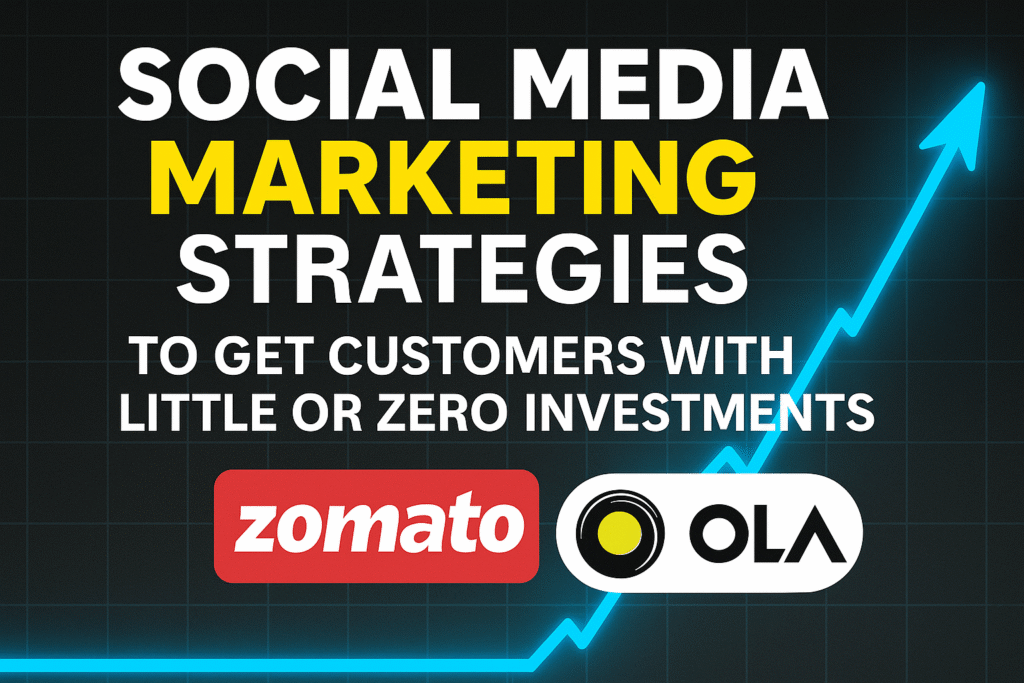
Now, let’s investigate the underpinnings that make these social media campaigns so powerful.
Social Media Marketing Strategy Frameworks → RACE, SOSTAC, and More
Marketing frameworks provide structure and direction for social media planning. Here’s a breakdown of the most effective frameworks utilized by successful brands:
| Framework | Stands For | Strengths | Best Use Case |
|---|---|---|---|
| RACE | Reach, Act, Convert, Engage | Customer-journey focused; Emphasizes metrics at each stage; Integrates with analytics | Planning the complete customer experience from discovery to loyalty |
| SOSTAC | Situation, Objectives, Strategy, Tactics, Action, Control | Comprehensive planning approach; Easy to understand; Adaptable to any marketing scenario | Developing a complete marketing plan from analysis to implementation |
| 5 S’s | Sell, Serve, Speak, Save, Sizzle | Goal-oriented; Focuses on customer benefits; Balances sales and experience | Setting clear objectives for social media campaigns |
| 7 P’s | Product, Price, Place, Promotion, People, Process, Physical Evidence | Comprehensive marketing mix; Adaptable to digital channels; Considers operational aspects | Ensuring all marketing elements work together cohesively |
| Hub-and-Spoke | Central content (hub) with distributed pieces (spokes) | Content efficiency; Platform optimization; Consistent messaging | Content planning and cross-platform distribution |
The RACE framework works particularly well for social media campaigns focused on moving clients through the buying journey, whereas SOSTAC provides a more holistic approach to overall marketing planning. For content distribution specifically, the Hub-and-Spoke model offers an effective way to maximize the impact of core content components.
Many successful companies mix aspects from multiple frameworks. For example, employing SOSTAC for general planning while applying RACE concepts to map content to specific customer journey stages.
Ready to design your own amazing social media marketingstrategy? Let’s break it down step by step.
How to Build a Social Media Marketing Strategy in 2025 → Step-by-Step Guide
Creating an effective social media marketing strategy demands a disciplined approach. Follow these steps to establish a plan that generates demonstrable results.
Set Clear Goals for Your Social Media Campaigns
Every great social media marketing strategy begins with SMART goals →
- Specific → Clearly state what you want to achieve
- Measurable → Establish measures to track progress
- Achievable → Set realistic targets based on your resources
- Relevant → Align with wider corporate objectives
- Time-bound → Set timelines for fulfilling goals
Different campaign types demand different goals:
Brand Awareness Goals →
- Increase follower count by X% within Y months
- Achieve Z impressions for campaign hashtag
- Expand reach to new geographic or demographic segments
Lead Generation Goals →
- Generate X qualified leads per month from social networks
- Achieve Y% conversion rate from social media landing sites
- Reduce cost per lead to $Z with focused content
Sales Goals →
- Drive X% of e-commerce sales from social media channels
- Increase average order value from social referrals by Y%
- Achieve Z return on ad spend (ROAS) for social campaigns
The trick is establishing goals that correspond with your present business priorities while being realistic about what can be achieved with your available resources.
Now that you’ve stated your goals, it’s crucial to grasp exactly who you’re aiming to target.
Identify & Understand Your Target Audience
Effective social media marketing demands a strong grasp of your customers through detailed buyer personas:
| Persona | Age | Platform | Content Type | Pain Points |
|---|---|---|---|---|
| Career-Focused Professionals | 25-45 | LinkedIn, Twitter | Industry insights, career tips, success stories | Time management, professional development, networking |
| Young Trend Followers | 16-24 | TikTok, Instagram | Short-form videos, interactive content, behind-the-scenes | FOMO, authenticity, staying current with trends |
| Value-Conscious Parents | 30-50 | Facebook, Pinterest | How-to guides, product comparisons, family content | Budget constraints, finding reliable products, time-saving solutions |
| Sustainability Advocates | 18-65 | Instagram, Twitter | Environmental impact stories, ethical practices, community initiatives | Climate anxiety, finding eco-friendly options, avoiding greenwashing |
To construct accurate personas, apply these research tools →
- Facebook Insights → Demographic and interest data about your existing audience
- SparkToro → Discover what your audience reads, watches, and follows
- Google Analytics → Behavior patterns of website visitors via social channels
- Social listening tools → Monitor talks about your brand and industry
Understanding these personas allows you to produce content that resonates with specific target segments rather than trying to appeal to everyone with generic messaging.
With defined goals and audience profiles established, it’s crucial to select the best platforms for your company.
Choose the Right Social Media Platforms for Your Brand
Not all social media sites are made equal, and spreading yourself too thin might dilute your efficacy. Here’s a comparison of major platforms to help you choose:
- Best for → Visual brands, lifestyle content, younger audiences
- Content types → Reels, Stories, carousel posts, live videos
- Advantages → High engagement, great e-commerce features
- Challenges → Algorithm modifications, significant competition for attention
LinkedIn →
- Best for → B2B firms, professional services, thought leadership
- Content types → Industry insights, company news, instructional content
- Advantages → Highly targeted B2B advertising, professional context
- Challenges → Higher CPC, demands consistent value-driven content
X (previously Twitter) →
- Best for → News, customer service, real-time engagement
- Content types → Short-form updates, polls, discussion starters
- Advantages → Real-time communication, trend participation
- Challenges → Fast-moving timeline, requiring frequent publishing
TikTok →
- Best for → Creative brands, youth-oriented items, entertainment
- Content types → Short-form films, challenges, behind-the-scenes
- Advantages → Viral potential, high organic reach
- Challenges → Continuous content creation demands, specialized format
Threads →
- Best for → Community building, text-based interactions
- Content types → Short updates, chat threads, casual material
- Advantages → Growing user base, less rivalry than established platforms
- Challenges → Evolving features, finding the proper content mix
The golden rule → Don’t strive to be everywhere — be where your folks are. Select 2-3 platforms that best correspond with your target demographics, content capabilities, and commercial objectives.
With your platforms picked, it’s time to establish a content plan that maximizes efficiency.
Plan Your Content Strategy with the Hub-and-Spoke Model
The Hub-and-Spoke model is a content strategy approach that creates efficiency while preserving platform optimization:
The Hub → Your main content – often lengthier, more in-depth pieces like:
- Blog posts
- Podcast episodes
- Long-form videos
- Research papers
- Webinars
The Spokes → Derivative content pieces disseminated across platforms:
- Social media posts
- Short video clips
- Infographics
- Quotes and statistics
- Behind-the-scenes content
This model provides a content multiplication effect. For example, one in-depth blog post (the hub) could generate:
- 10 LinkedIn posts highlighting key points
- 3 Instagram Reels illustrating themes visually
- 5 Twitter posts with facts or quotes
- 1 thorough Thread breaking down the issue
- Multiple Pinterest graphics saving key takeaways
The Hub-and-Spoke method maintains continuity in messaging while respecting the distinct forms and audience expectations of each platform. It also dramatically enhances content ROI by getting maximum value from each core piece.
Understanding which content types perform well on each platform is vital for optimizing engagement. Let’s investigate it next.
Best Performing Content Types on Different Platforms in 2025
Content performance varies greatly across platforms. This table illustrates the most effective formats based on 2025 engagement data:
| Platform | Best Format | Engagement Rate | Tools to Use |
|---|---|---|---|
| Short-form video (Reels) | 6.1% avg. engagement | Canva, CapCut, Adobe Express | |
| TikTok | Authentic, trend-based videos | 8.5% avg. engagement | CapCut, InShot, TikTok Creative Center |
| Carousel posts, thought leadership | 3.2% avg. engagement | Canva, LinkedIn Polls, Adobe Express | |
| X (Twitter) | Visual tweets, conversation starters | 1.8% avg. engagement | Buffer, Threads, Typefully |
| Native videos, community discussions | 2.5% avg. engagement | Facebook Creator Studio, Hootsuite | |
| Threads | Text threads, casual conversations | 4.2% avg. engagement | Thread Creator, Typefully |
| Vertical infographics, guides | 2.1% avg. engagement | Canva, Tailwind, Piktochart |
Platform-Specific Content Tips →
Instagram Reels →
- Keep videos under 30 seconds for highest completion rates
- Use trending soundtrack when relevant to your brand
- Incorporate text overlays for viewers with sound off
Carousel Posts →
- Start with an attention-grabbing first slide
- Use 5-7 slides for best engagement
- Include a clear call-to-action on the final slide
Threads →
- Create conversation starters that inspire comments
- Break complex topics into smaller chunks
- Use a conversational, authentic tone
Polls and Interactive Content →
- Ask questions relevant to your audience’s interests
- Keep alternatives simple and limited (2-4 choices)
- Follow up with insights from the results
The content landscape continues to evolve, but authenticity, value, and platform-appropriate forms remain continuous success drivers across all channels.
Read More: How to Sell Anything Using Proven Marketing Psychology
Artificial intelligence is altering how marketers handle social media. Let’s study how AI is transforming strategy development.
AI in Social Media Marketing Strategy → Tools, Workflows & Use Cases
Artificial intelligence has changed from an experimental tool to an essential component of good social media marketing strategy. In 2025, AI tools let marketers work smarter, faster, and with greater precision.
Real Examples of AI Automations in Social Media Planning
Content Generation →
- ChatGPT → Generates first content drafts, headlines, and captions
- Jasper → Creates platform-specific content based on brand criteria
- Copy.ai → Develops versions of social posts for A/B testing
Visual Content Creation →
- DALL-E → Generates bespoke pictures based on text prompts
- Canva Magic Studio → Automates design elements and makes variations
- Midjourney → Produces innovative images for creative campaigns
Scheduling and Analytics →
- Buffer AI → Recommends best publishing times based on audience behavior
- Hootsuite Insights → Provides AI-powered content ideas based on performance
- Sprout Social → Uses predictive analytics to forecast content performance
Engagement and Community Management →
- Heyday → Automates responses to frequent customer inquiries
- Publer AI → Generates relevant responses to comments and messages
- Sprinklr AI → Identifies possible customer service issues before they escalate
These tools don’t replace human ingenuity but augment it by handling monotonous chores and giving data-driven insights that improve decision-making.
Let’s investigate how to integrate these AI technologies into your workflow.
How to Use AI for Content Creation, Scheduling & Engagement
Implementing AI efficiently requires a deliberate approach that mixes automation with human oversight:
Content Creation Workflow →
- Use AI technologies (ChatGPT, Jasper) to generate content ideas and rough drafts
- Human editors modify the text to ensure brand voice and accuracy
- Leverage AI-powered design tools (Canva Magic Studio) to develop graphics
- Human evaluation for brand consistency and creative direction
- Use AI to recommend hashtags and tweak copy for each platform
Content Scheduling Workflow →
- Upload content to scheduling tools with AI capabilities (Buffer, Later)
- AI analyzes previous performance to determine best posting times
- Use AI recommendations to establish a balanced content calendar
- Human review to guarantee congruence with current events and campaigns
- AI tools automatically distribute content across platforms
Engagement Workflow →
- AI monitoring technologies track mentions and comments across platforms
- Automated answers handle frequent questions and acknowledgments
- AI sentiment analysis identifies potential concerns for human intervention
- Human team members address difficult requests or bad feedback
- AI analyzes engagement trends to optimize future content strategy
Important Caution → While AI can drastically improve efficiency, it’s essential not to allow automation dilute your brand message. The most successful brands employ AI as a tool for augmentation rather than replacement, preserving human oversight for creativity, emotional intelligence, and strategic decision-making.
Measuring the impact of your social media initiatives is vital. Let’s look at the stats that genuinely matter.
Social Media ROI metrics → Metrics That Actually Matter
Effective measurement is critical for maximizing social media performance and delivering corporate benefit. Focus on these essential KPIs based on your objectives:
| Objective | Key Metrics | Measurement Tools | Reporting Frequency |
|---|---|---|---|
| Brand Awareness | Reach, Impressions, Follower Growth Rate | Platform Analytics, Sprout Social, Hootsuite | Weekly/Monthly |
| Engagement | Engagement Rate, Amplification Rate, Applause Rate | Native Analytics, Brandwatch, Buffer | Weekly |
| Lead Generation | Click-Through Rate, Conversion Rate, Cost Per Lead | Google Analytics, UTM Parameters, Platform Ad Managers | Weekly/Campaign-based |
| Sales | Conversion Value, Revenue Attribution, ROAS | Google Analytics, CRM Integration, Platform Attribution | Monthly |
| Customer Loyalty | Retention Rate, Repeat Purchase Rate, Customer Lifetime Value | CRM Data, Customer Surveys, Repeat Purchase Analysis | Quarterly |
KPIs vs Vanity Metrics – Understand the Difference
Not all measures bear equal weight in judging social media success:
Key Performance Indicators (KPIs) are measurements that directly represent success toward company objectives →
- Conversion rate
- Revenue attributed to social channels
- Cost per acquisition
- Customer retention rate
- Share of voice relative to competition
Vanity Metrics may look good but don’t necessarily represent commercial impact →
- Total followers (without engagement)
- Likes (without further action)
- Impressions (without context)
- Video views (without completion rate)
- App downloads (without active usage)
For example, a post reaching 100,000 people (vanity measure) signifies little if it generates no clicks, conversions, or significant engagement. Conversely, a post reaching only 10,000 people that generated 500 qualified leads and 50 purchases reflects considerably higher actual economic value.
The idea is to track metrics relevant for each goal:
- For awareness goals → Focus on reach, impression share, and brand mention growth
- For engagement goals → Track engagement rate, share rate, and comment sentiment
- For conversion goals → Measure click-through rate, conversion rate, and cost per acquisition
- For retention goals → Monitor repeat customer rate, customer satisfaction, and advocacy metrics
Let’s look at how to measure the actual cash return on your social media investments.
Social Media ROI Calculator → Budget vs Return
Understanding the financial impact of your social media operations needs careful tracking of expenditures and returns:
| Platform | Monthly Budget | Reach | Leads | Conversions | ROI % |
|---|---|---|---|---|---|
| $5,000 | 250,000 | 500 | 50 | 180% | |
| $3,500 | 75,000 | 200 | 20 | 160% | |
| $2,500 | 180,000 | 350 | 30 | 210% | |
| TikTok | $2,000 | 320,000 | 300 | 25 | 175% |
| Total | $13,000 | 825,000 | 1,350 | 125 | 185% |
ROI Calculation Formula → ROI % = [(Revenue Generated – Campaign Cost) / Campaign Cost] × 100
For accurate attribution:
- Set up UTM parameters for all social media connections using Google’s Campaign URL Builder
- Create GA4 dashboards that track user journeys from social touchpoints
- Implement conversion tracking pixels on all conversion pages
- Set up multi-touch attribution models to analyze the whole consumer journey
- Account for both direct conversions and assisted conversions in ROI calculations
Remember that some social media impacts—like brand building and community development—may not be immediately quantified but contribute to long-term economic success.
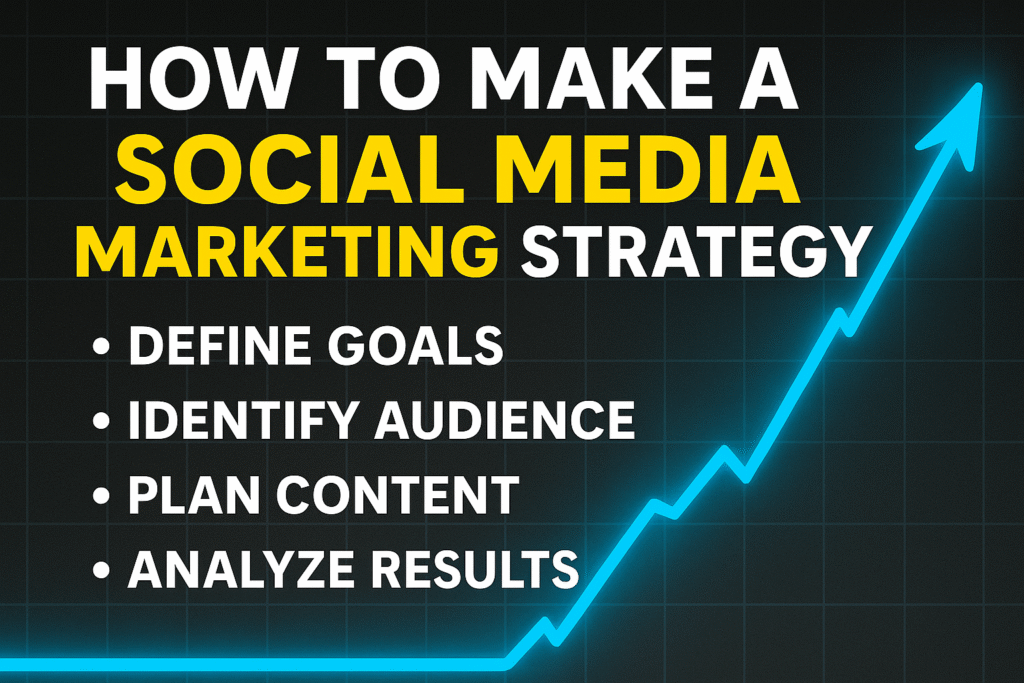
FAQs on How to build a Social Media Strategy
How frequently should we publish on social media platforms?
Posting frequency varies by platform. Research recommends these ideal frequencies for 2025 →
- Instagram → 3-5 times each week
- LinkedIn → 2-3 times per week
- Facebook → 3-5 times per week
- Twitter → 3-5 times per day
- TikTok → 1-2 times per day
However, consistency and quality are more important than volume. It’s better to maintain a sustainable schedule of high-quality content than to post frequently with lower-quality information. A detailed answer for this according to 21 studies is here.
Which social media channels work best for B2B marketing?
LinkedIn is the most effective medium for B2B marketing, with 80% of B2B prospects created through social media originating from the network. However, Twitter and Instagram are becoming significant for B2B brand exposure. The key is identifying where your specific B2B audience spends their time and adapting your approach accordingly.
What is considered a decent engagement rate in 2025?
Average engagement rates vary by platform →
- Instagram → 2-3% is okay, above 4% is outstanding
- LinkedIn → 1-2% is okay, above 3% is outstanding
- Facebook → 0.5-1% is nice, above 2% is fantastic
- Twitter → 0.2-0.5% is fine, above 1% is outstanding
- TikTok → 5-6% is nice, above 10% is fantastic
Engagement rates often decline as follower count increases, thus these criteria should be adjusted according on your audience size.
Can I utilize AI for all elements of social media management?
While AI technologies can substantially enhance efficiency for content development, scheduling, and basic engagement, they should complement rather than replace human involvement. Areas like creative planning, crisis management, and developing true community relationships still benefit tremendously from human touch. The most effective method is a hybrid model where AI handles monotonous chores while humans provide strategic direction and meaningful connection.
How long before we see ROI from our social media marketing strategy?
Timeframes for social media ROI vary based on objectives →
- Awareness measures often show movement within 1-2 months
- Engagement increases can be evident within 2-3 months
- Lead generation normally requires 3-6 months to maximize
- Revenue attribution normally takes 6-12 months to reveal obvious patterns
B2B enterprises often have longer social media ROI durations than B2C brands due to longer sales cycles. Setting realistic expectations and focusing on progressive improvements rather than overnight success is key for sustainable social media growth.
By applying the tactics provided in this guide and regularly measuring and adjusting your approach, you can construct a social media presence that produces significant business results and builds lasting connections with your audience.
